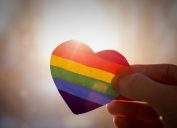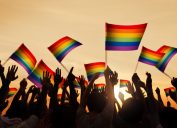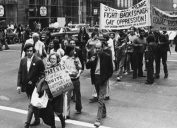These Are the Secret Meanings of the Pride Flag's Colors
Each color on the rainbow pride flag has a specific symbolic meaning.

No matter who you are, where you live, or how involved you are in the LGBTQIA+ community, you can probably identify the rainbow pride flag. The famous six-color pattern has come to represent LGBTQIA+ people worldwide, cropping up on everything from buttons and pins to sneakers and scrunchies.
However, despite the prevalence of this symbol today, the pride flag has seen a few rounds of notable modifications since its inception less than 50 years ago. To understand the meaning of the colors in this bright symbol of equality, we've uncovered the secret meaning of each hue in the rainbow pride flag.
The Origins of the Pride Flag
Before the rainbow pride flag was created, there was another symbol for the LGBTQIA+ community: a pink triangle. This triangle, however, had a loaded, anti-gay history. Throughout the Holocaust, the Nazis forced those whom they labeled as gay to wear inverted pink triangle badges, just as they forced Jewish people to wear a yellow Star of David.
In the late 1970s, the pink triangle was somewhat reclaimed by the gay community. "Gay people wear the pink triangle today as a reminder of the past and a pledge that history will not repeat itself," read one 1977 letter to the editor in Time. Still, activists recognized the need for a more empowering symbol.
The First Rainbow Flag
Enter: Gilbert Baker, the man who would create the first rainbow pride flag. In the late '70s, Baker was living in San Francisco when he met writer Cleve Jones, filmmaker Artie Bressan, and rising activist Harvey Milk. The trio encouraged Baker to create a positive emblem for the LGBTQIA+ community.
Baker agreed and he looked to his community for inspiration, specifically those dancing at San Francisco's music venue Winterland Ballroom one night. As excerpted on the website for his estate, Gilbert's memoir, Rainbow Warrior, includes his memory of deciding to make the rainbow flag:
The crowd was as much a part of the show as the band. Everyone was there: North Beach beatniks and barrio zoots, the bored bikers in black leather, teenagers in the back row kissing. There were long-haired, lithe girls in belly-dance get-ups, pink-haired punks safety-pinned together, hippie suburbanites, movie stars so beautiful they left you dumbstruck, muscle gayboys with perfect mustaches, butch dykes in blue jeans, and fairies of all genders in thrift-store dresses … We were all in a swirl of color and light. It was like a rainbow.
A rainbow. That's the moment when I knew exactly what kind of flag I would make.

The Eight Original Pride Flag Colors
The earliest version of Baker's rainbow pride flag, from 1978, included eight colors: hot pink, red, orange, yellow, green, turquoise, indigo, and violet. According to the website for his estate, Baker assigned a special meaning to each color of his pride flag.
- Hot pink = Sex
- Red = Life
- Orange = Healing
- Yellow = Sunlight
- Green = Nature
- Turquoise = Magic/Art
- Indigo = Serenity
- Violet = Spirit
The Pride Flag Colors Today
Almost immediately after the eight-color rainbow pride flag was unveiled, it was modified. Following the assassination of Harvey Milk on Nov. 27, 1978, demand for the flag increased dramatically. Since hot pink fabric was difficult to come by, Baker dropped that stripe from his flag.
In 1979, the flag was changed again. According to Baker's estate, that was because when it was hung vertically from the lamp posts of San Francisco's Market Street, the center stripe (turquoise) was obscured by the similarly-colored lamp post itself. Baker dropped yet another stripe, which resulted in the six-stripe version of the flag we use most often today—red, orange, yellow, green, blue, and violet. The blue that replaced the indigo now symbolizes harmony.
Here are the meanings behind the colors in the current pride flag:
- Red = Life
- Orange = Healing
- Yellow = Sunlight
- Green = Nature
- Blue = Harmony
- Violet = Spirit
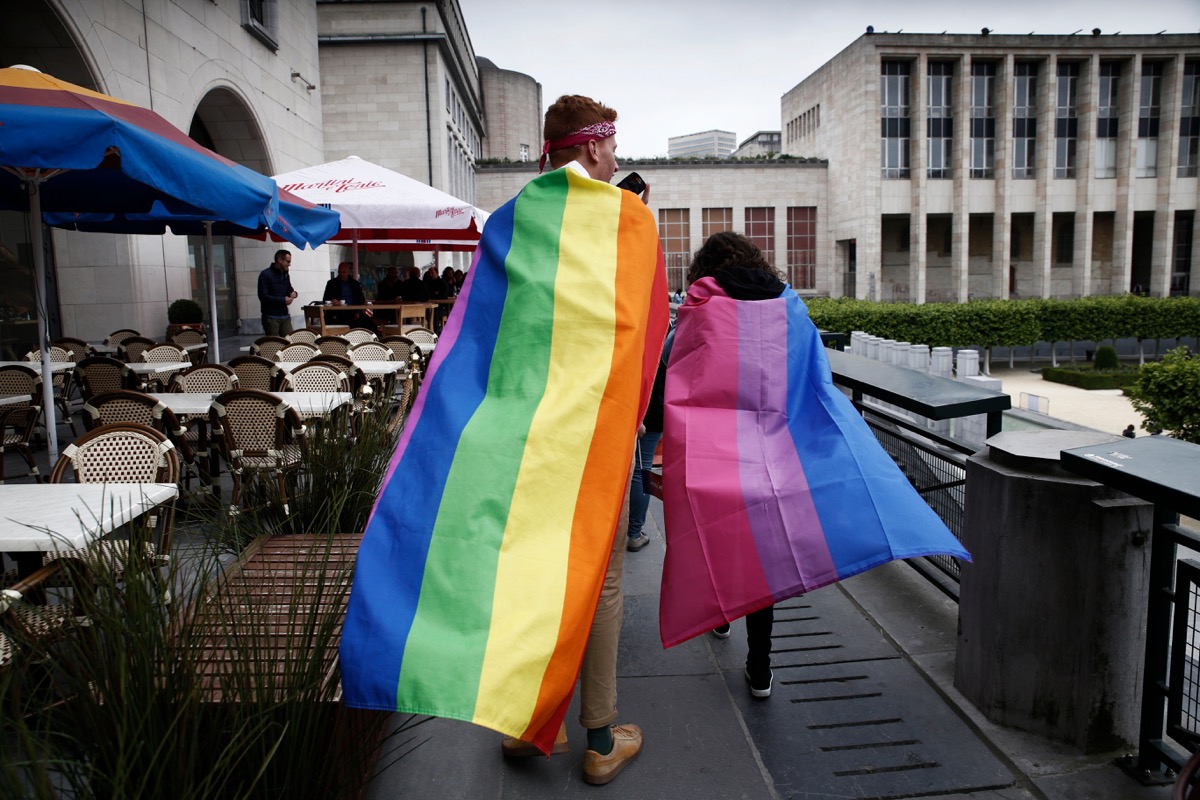
Beyond the Rainbow
Today, there are even more pride flags out there. As Pride points out, a plethora of other flags were designed to represent different groups within the LGBTQIA+ community. Flags have been created for people who identify as bisexual, pansexual, asexual, polyamorous, intersex, transgender, genderfluid, genderqueer, polysexual, agender, aromantic, non-binary, and more!
And many rainbow pride flags are now back to having eight stripes. In 2017, Philadelphia Pride unveiled a new rainbow pride flag with brown and black stripes designed to embrace people of color within the LGBTQIA+ community. Created by design company Tierney, the new, more inclusive pride flag can now be seen across the world.
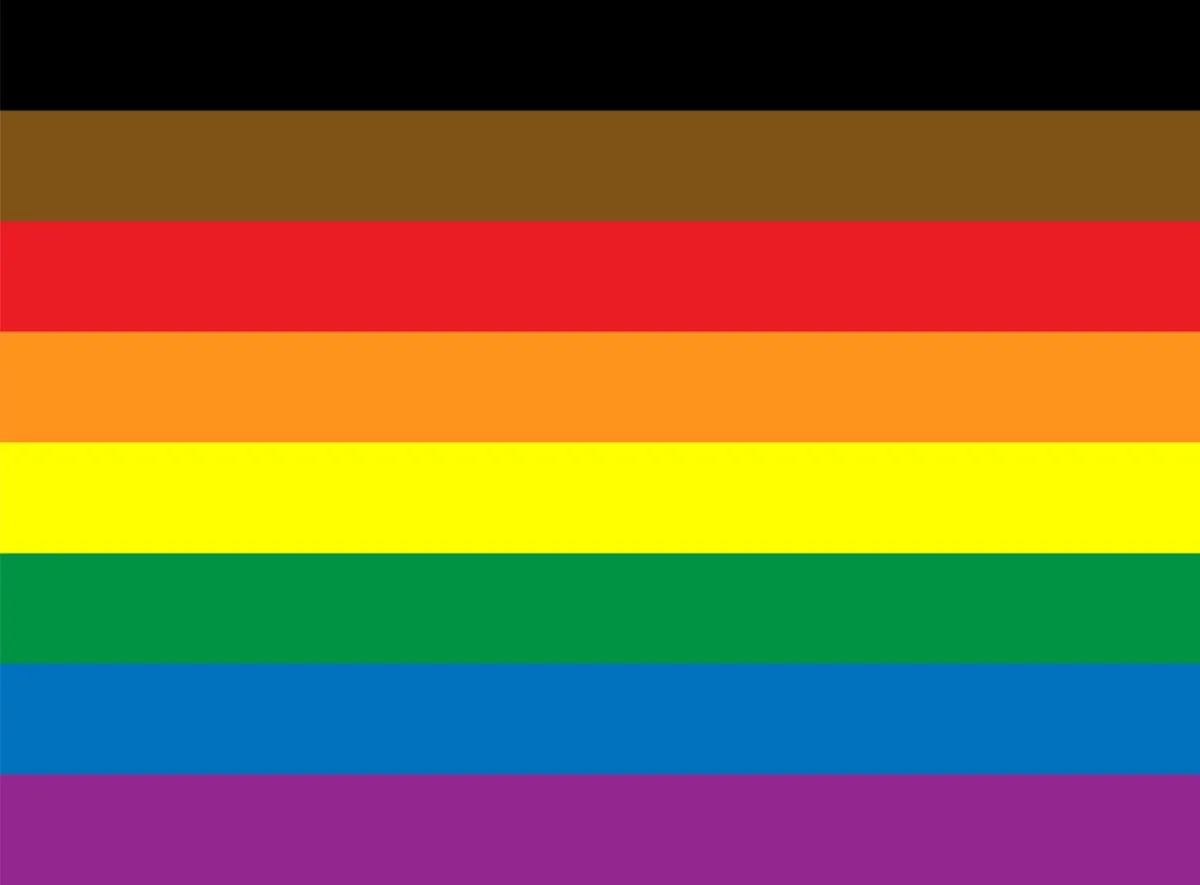
So whether you're holding a rainbow flag at a Pride parade or wearing one on an item of clothing, you can now do so knowing everything it stands for. And for more on the history of Pride, we answered the question, Why Is It Called Pride?
